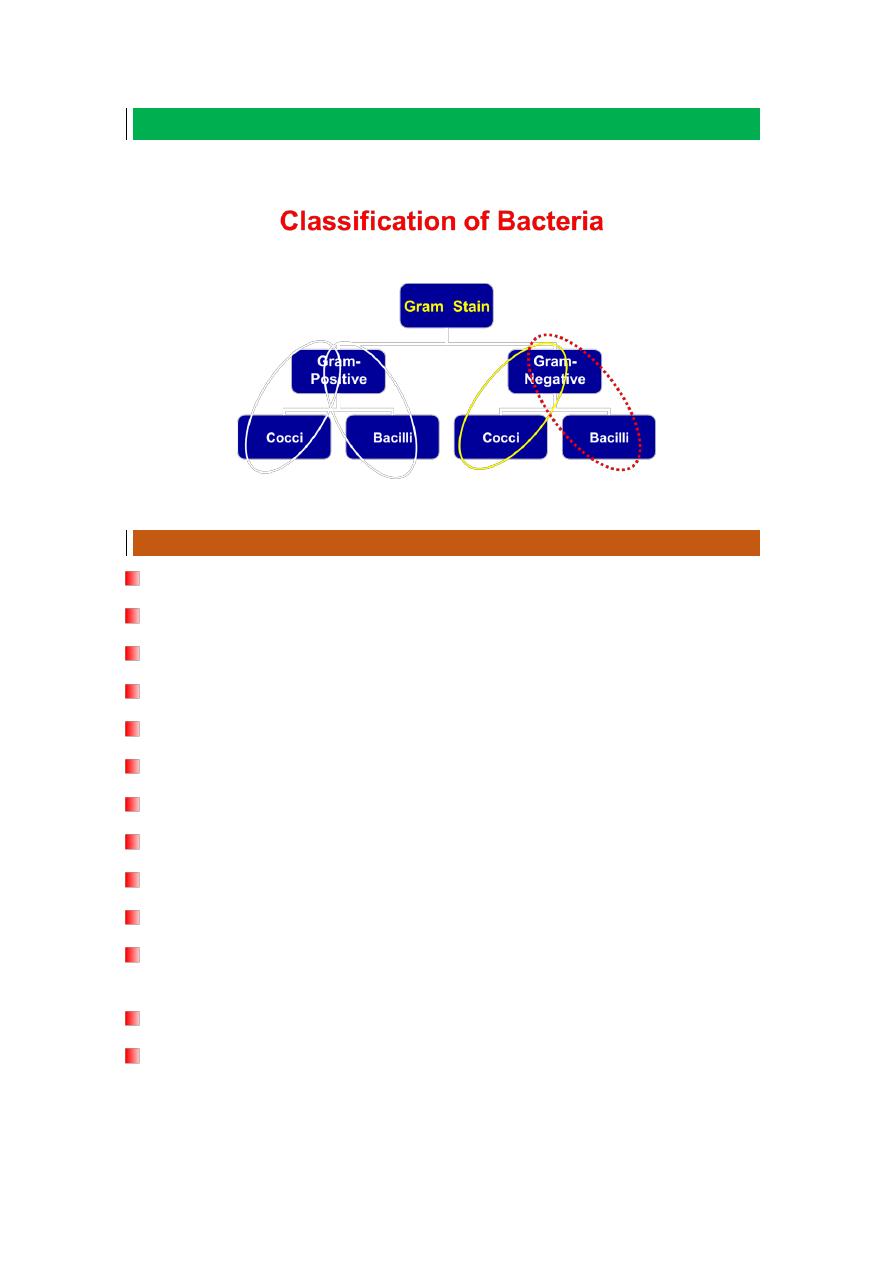
Microbiology-P4 D.Israa
1
Non-Fermentative Gram-Negative Rods
Pseudomonas spp
Characters of Pseudomonas
Gram-negative bacilli belonging to Pseudomonadaceae
Motile by means of a single polar flagellum.
Non spore forming
non Capsulated "Polysaccharide capsule"
Aerobic
Breakdown glucose by oxidation i.e. Oxidative
Oxidase and catalase positive
It has very simple nutritional requirements i.e. non fastidious
The most important pathogenic organism is Ps. aeruginosa
Optimum temperature is 37 C, and it is able to grow at 42 C
It is resistant to high concentrations of salts, dyes, weak antiseptics, and
many antibiotics
Common inhabitants of soil, water, GITe`ewe
Ps. aeruginosa is opportunistic pathogen and associated with a variety of
infections including:
– Urinary tract infections

Microbiology-P4 D.Israa
2
– Wound and burn with blue green pus
– Respiratory system infections (Pneumonia)
– Eye infection and may lead to blindness
– Ear infection (external ear or otitis media)
– Meningitis
– A variety of systemic infections
Ps. aeruginosa produce two types of soluble pigments:
– Pyoverdin or fluorscein: It is yellow-green pigment and fluorescent
– Pyocyanin: It is a blue-green pigment and non-fluorescent
Identification of Ps. Aeruginosa
Laboratory diagnosis
Specimen:
– Urine, pus, sputum, CSF, blood, skin swap according to the type of
infection
Microscopical Examination
– Gram Stain: Gram-negative rods
– Motility Test:
Hanging Drop Techniques
Semisolid agar medium
Cultural Characteristics
On Nutrient agar:
– Colonies are surrounded by bluish green coloration
On selective media "Cetermide"
– Pigments are more obvious
On Blood agar
-hemolytic colonies
On MacConkey agar
Pale yellow colonies i.e. non lactose fermenters
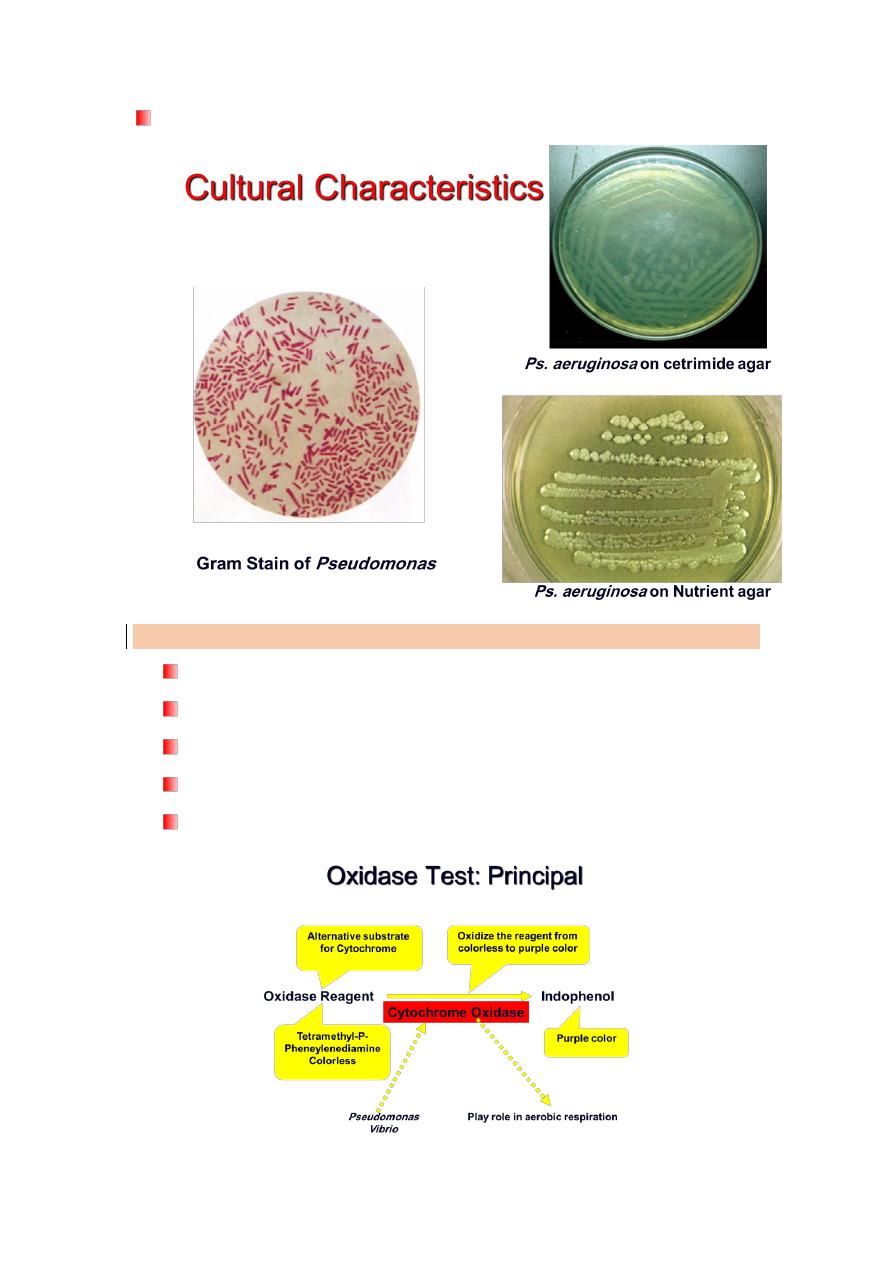
Microbiology-P4 D.Israa
3
Ps. aeruginosa able to grow at 42 C for 3 days
Biochemical Reactions
Oxidase positive
Breakdown glucose oxdatively
Nitrate Reductase negative
Gelatinase positive
Utilize Citrate
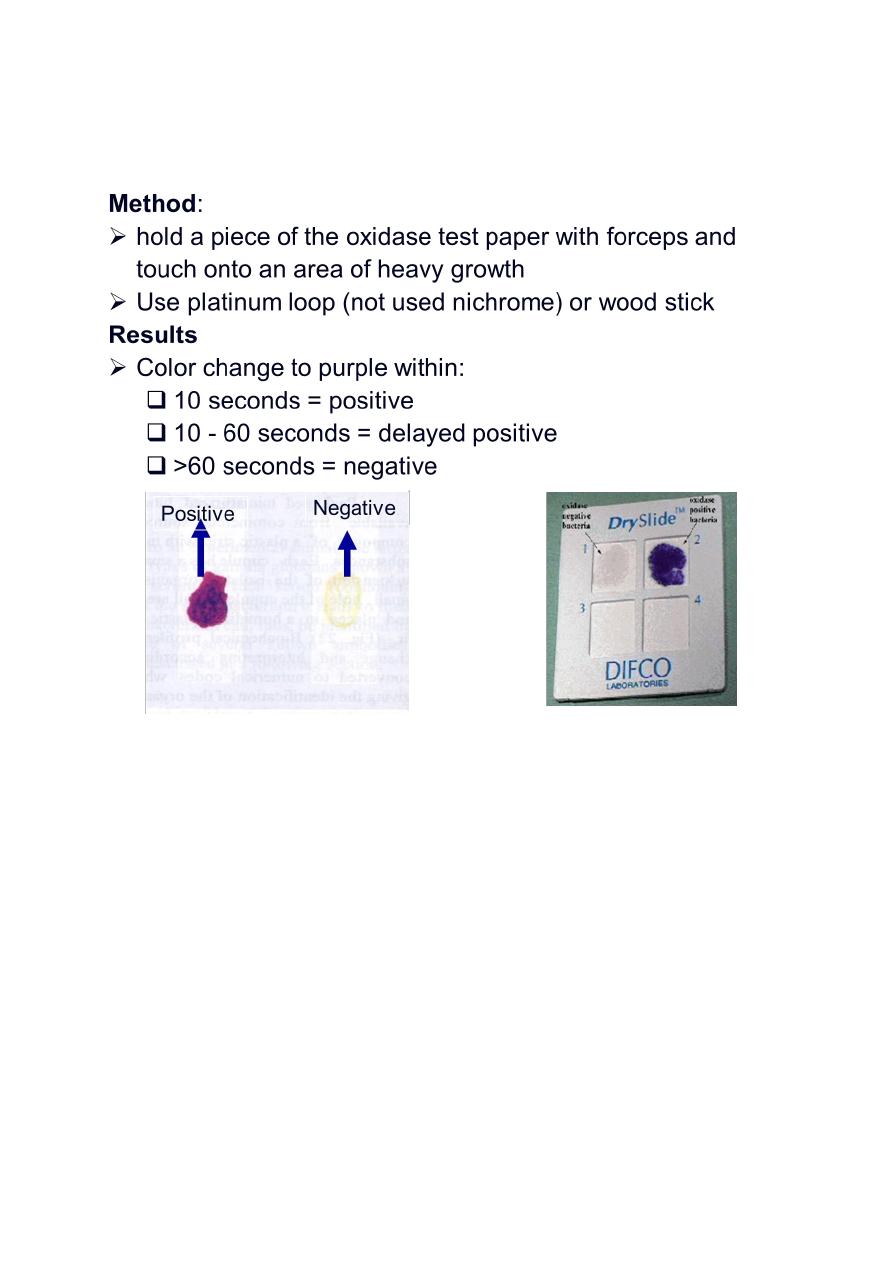
Microbiology-P4 D.Israa
4
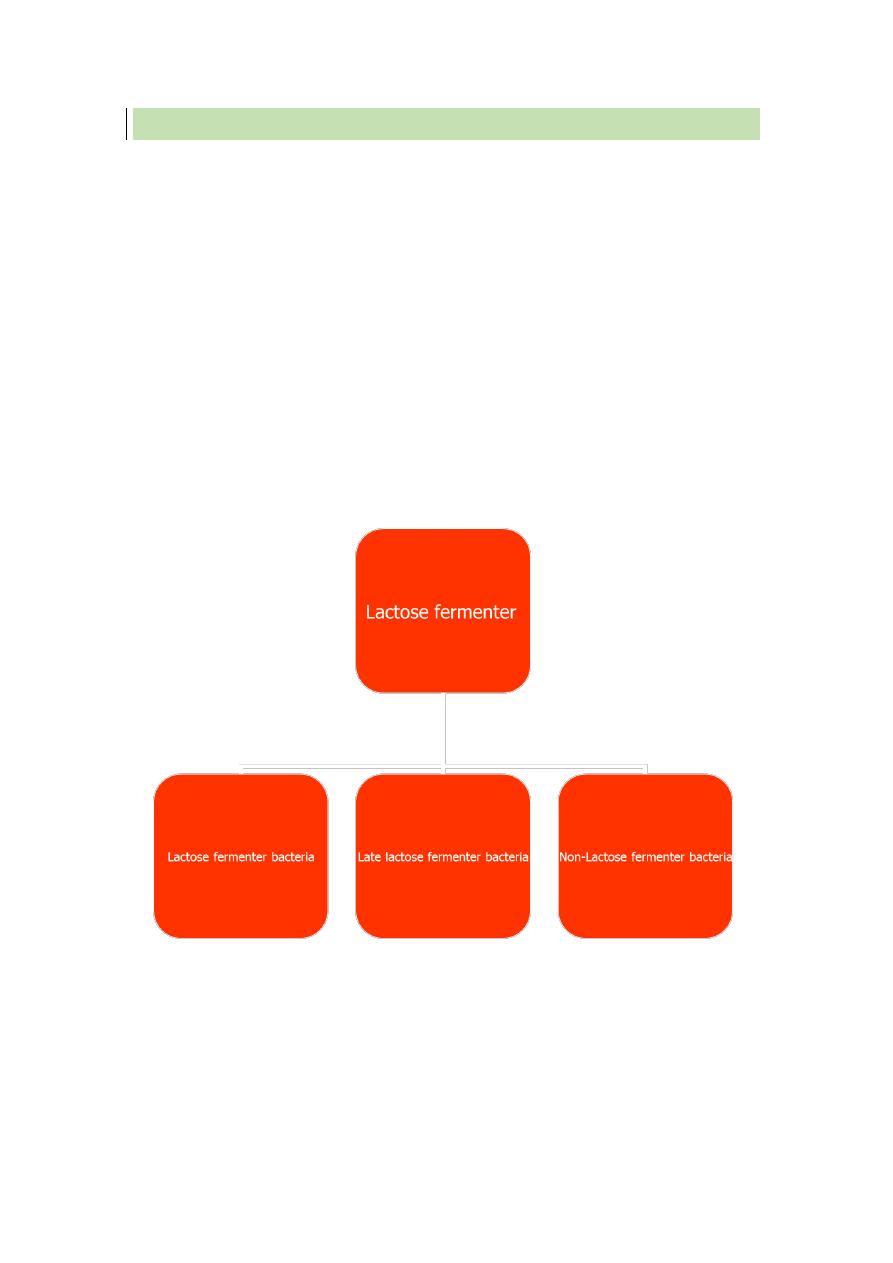
Microbiology-P4 D.Israa
5
ENTEROBACTERIACEAE
• Gram negative non-spore forming bacilli.
• Aerobic and facultative anaerobic.
• Grow easily on ordinary media.
• Most are motile with peritrichous flagella .
• All species ferment glucose with production of acid or acid and gas.
• Catalase +ve
• Oxidase –ve
• Inhabit the intestinal tract of man and animals naturally.
• Many species are pathogenic.
• Genera have been defined on biochemical basis.
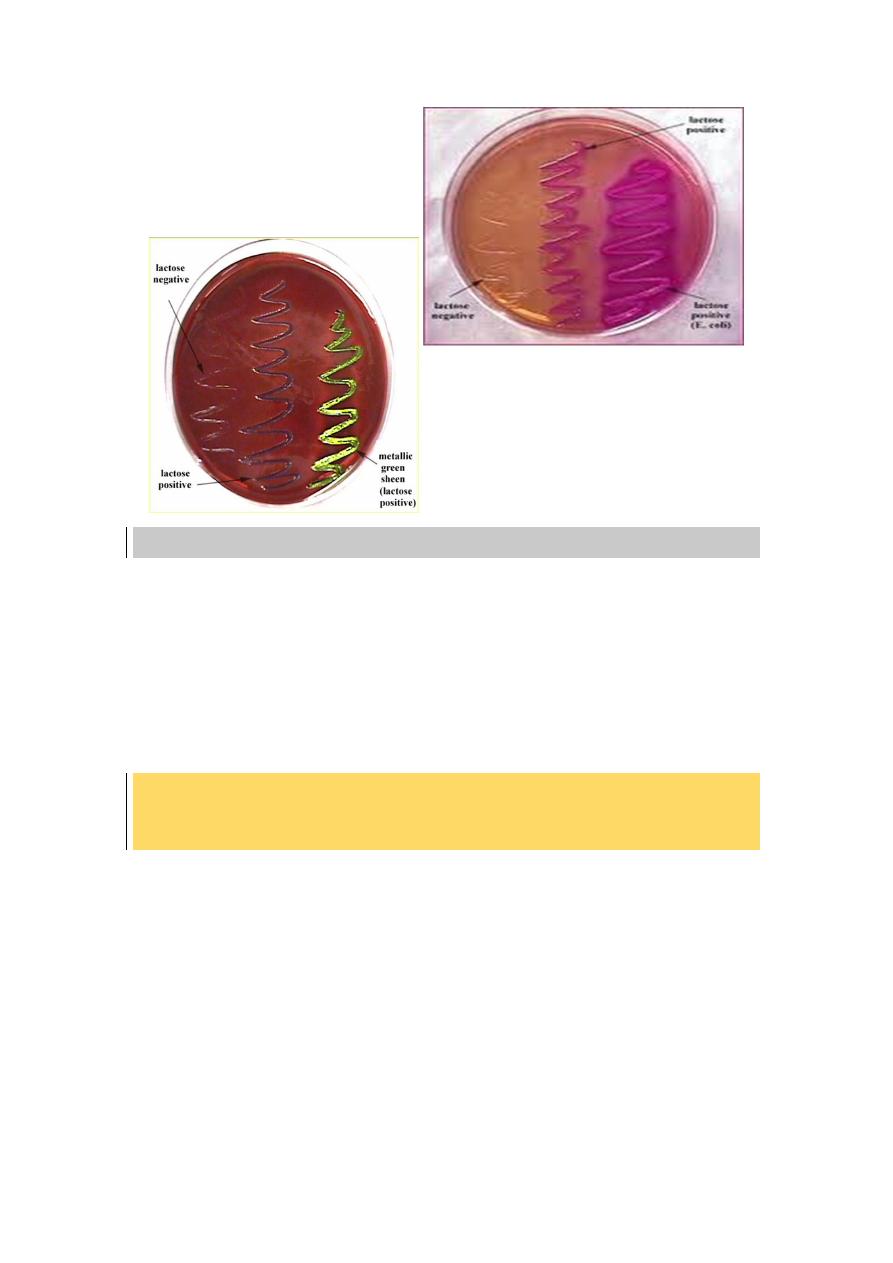
Microbiology-P4 D.Israa
6
Escherichia
Escherichia coli: cause UTI, diarrhea, bacteremia or meningitis.
Microscopical appearance: Gram-negative short rods. Most strains are
motile.
Cultural characteristics: Colonies on MacConkey agar are pink (lactose
fermented with bile precipitation.
Biochemical reactions: IMViC + + - -
IMViC tests
Indole
• Enterobacteraerogenes –
•Escherichia coli(pink/red) +
Kovac’s reagent detects if tryptophan has been hydrolyzed to
indol/tryptophanase
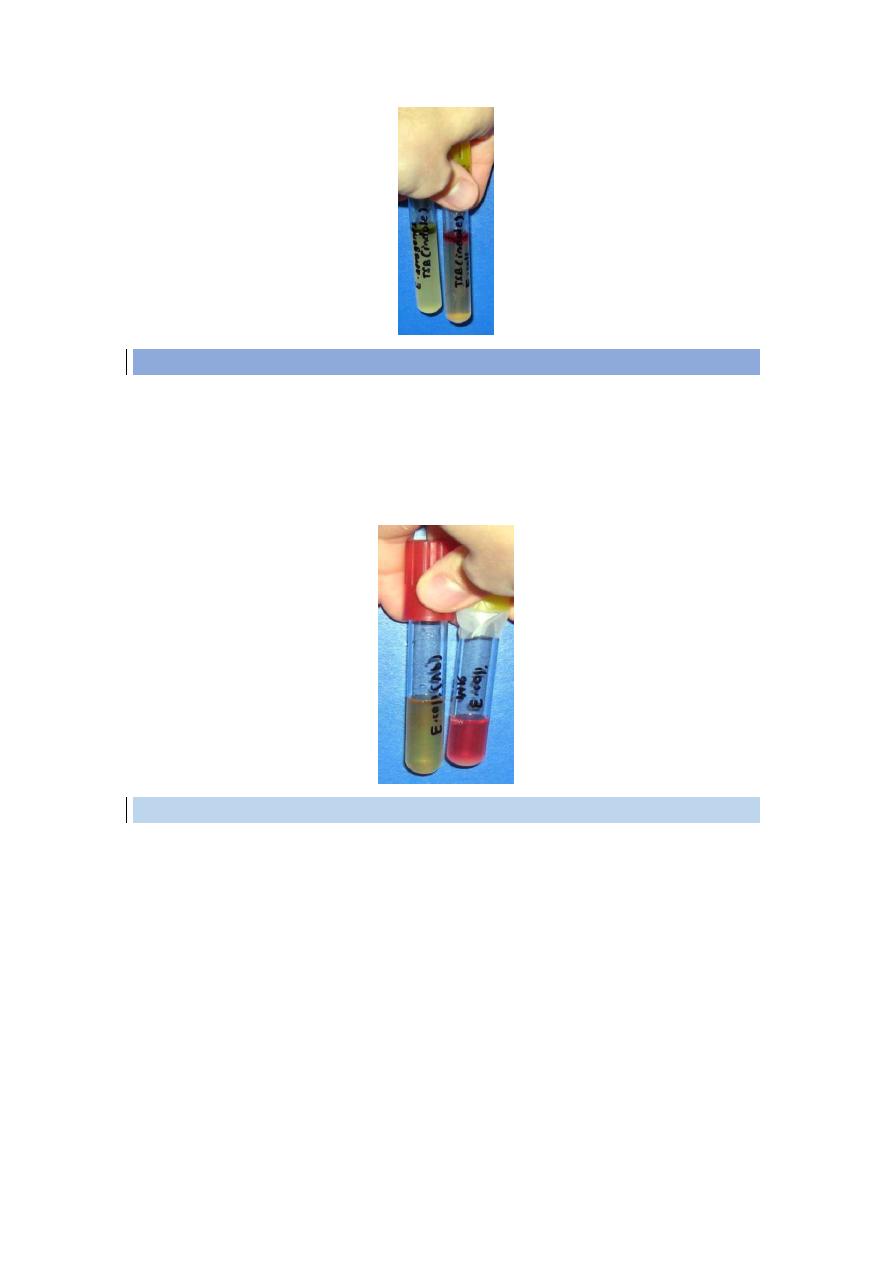
Microbiology-P4 D.Israa
7
Methyl Red (MR)
•Enterobacter aerogenes(left) –
•E. coli(bright red) +
•Reagent: Methyl red indicator identifies pH change due to mixed acid
fermentation
Voges –Proskauer (VP)
• Enterobacter aerogenes +
•E. coli –(left)
•Barritt’s reagent Tests for acetoin, precursor to 2,3 butanediol
fermentation•Addition of alpha-naptholand KOH
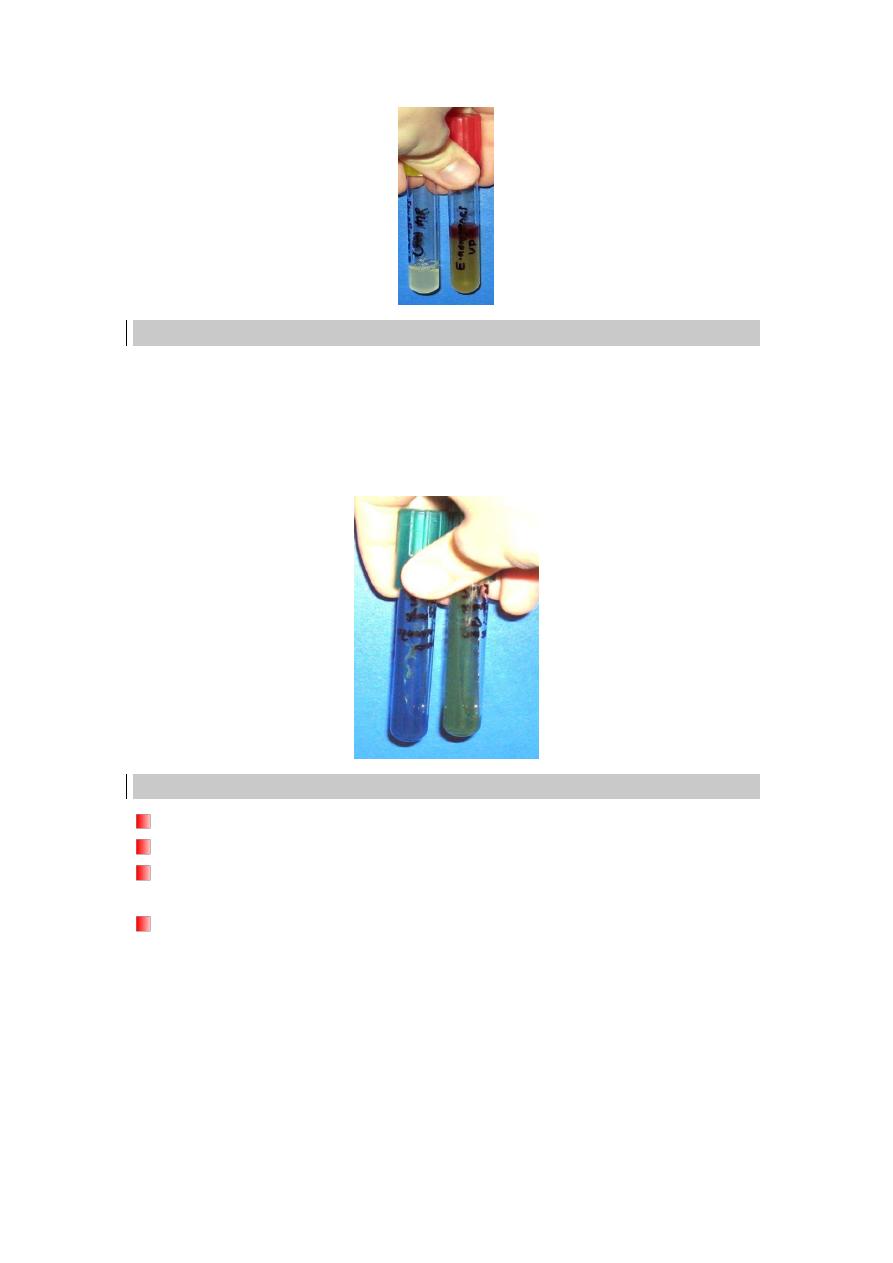
Microbiology-P4 D.Israa
8
Citrate
•E. coli (left green) –
•Enterobacter aerogenes (right royal blue) +
•Reagent: Bromothymol blue indicator tests for ability to use citrate as sole
carbon source/citrate permease
Urease
E. coli–(left)
Proteus vulgaris+
Phenol Red a pH indicator turns tube bright pink because NH3 decreases
the pH
CO(NH3)2+ 2 H2O –urease → CO2+ H2O + 2 NH3
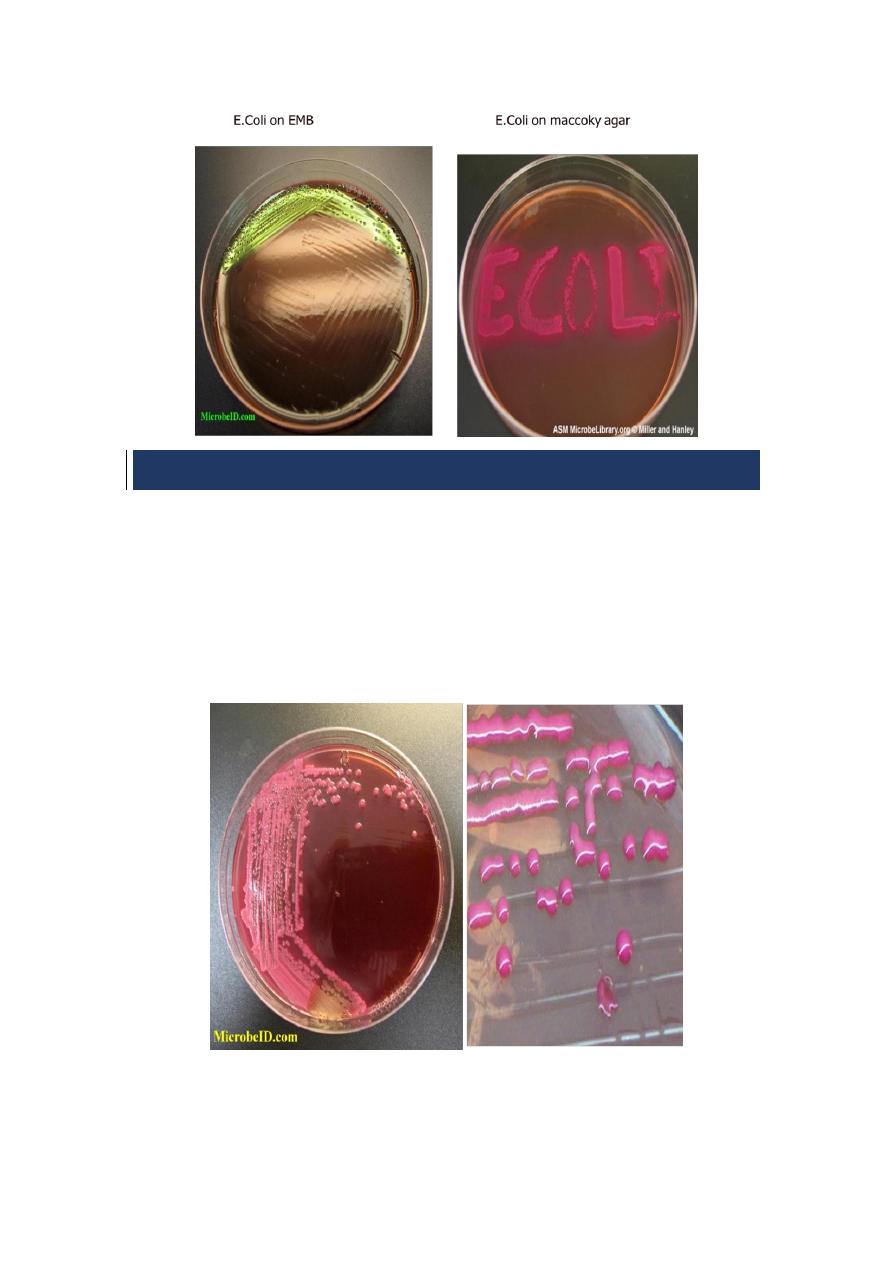
Microbiology-P4 D.Israa
9
Klebsiella
The most pathogenic species is K. pneumoniae that causes pneumonia.
Microscopical appearance: G _ve short rods. Non-motile. Capsulated
both in tissues and on in vitro cultivation.
Cultural characteristics: Colonies on MacConkey agar, are large, mucoid
and show pink color (lactose fermenter)
Biochemical reactions: IMViC - - + +,
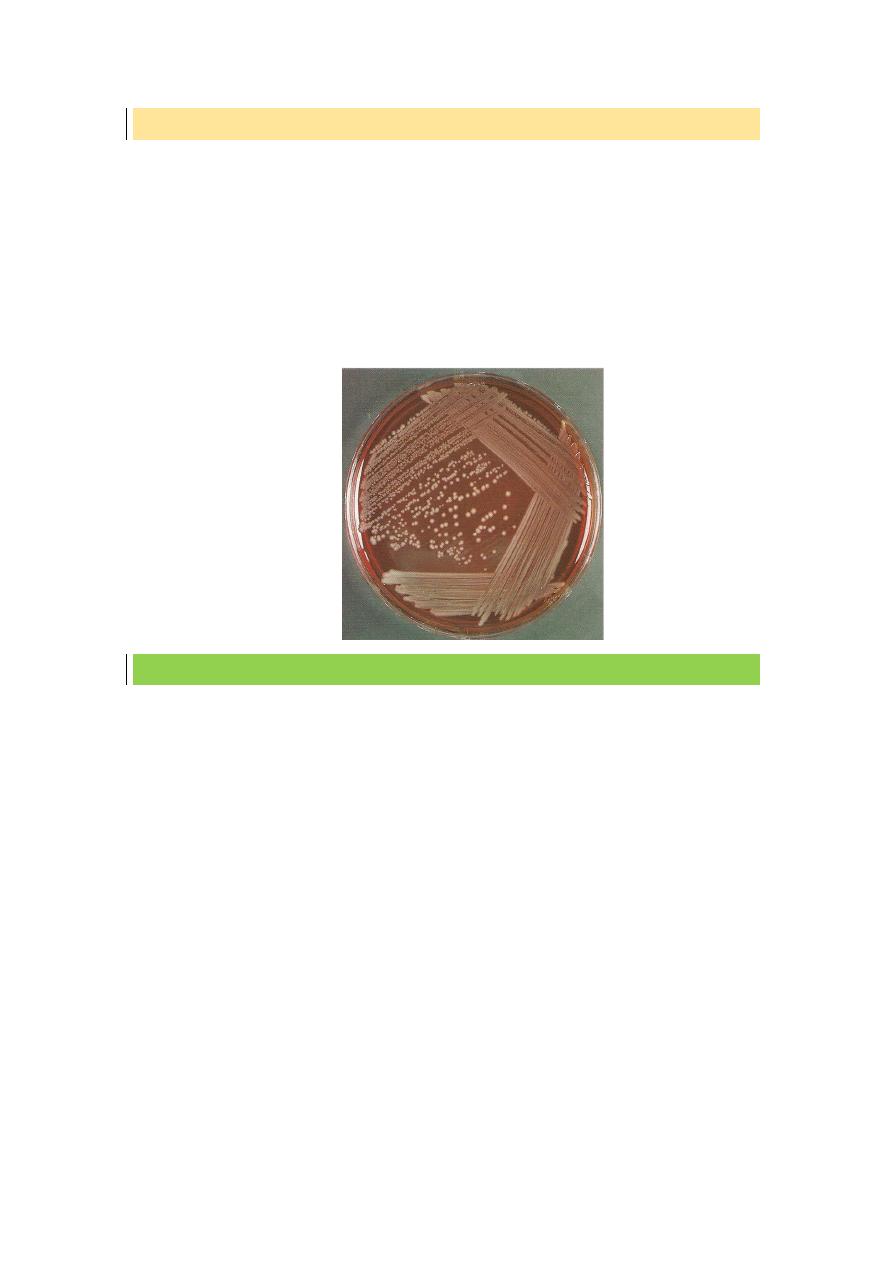
Microbiology-P4 D.Israa
10
Enterobacter
Is considered as an opportunist. They are frequently isolated from
urinary tract infections, septicemia. They are found in soil, water, dairy
products & animals & human intestine. The most common species: E.
cloaca, E.aerogenes.
Microscopical appearance: G _ve short rods, and motile.
Cultural characteristics: Colonies on MacConkey agar, are large, pink in
color (lactose fermented).
Serratia marcescens
Free living & common opportunistic pathogen in hospitalized patients.
Cause pneumonia, bactermia, endocarditic, UTI, meningitis or wound
infection.
Microscopical appearance: G -ve short rods and motile
Cultural characteristics: Produce a red pigment (prodigiosin) at room
temp. Colonies on MacConkey agar are late lactose fermenters, i.e give
pink colonies after 48 hr.
Biochemical reactions: IMViC - - + +, TSI Alkaline slant/Acid butt (K/A).
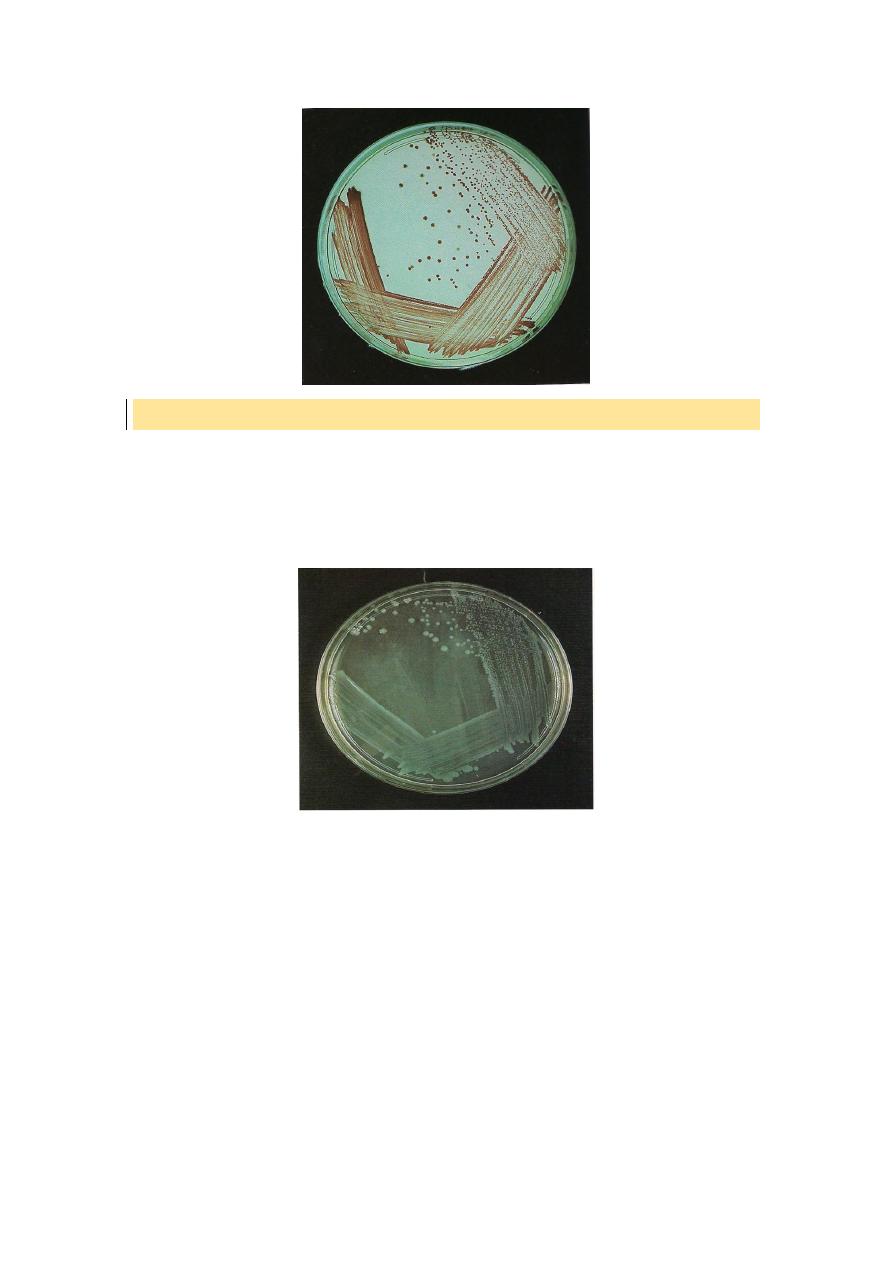
Microbiology-P4 D.Israa
11
Citrobacter
Considered as an opportunist. Can cause UTI & bacteremia. G-ve short
rods, motile & late lactose fermenters on MacConky agar.
Biochemical reactions: IMViC V + - +, Urease V, TSI Alkaline slant/Acid
butt(K/A).
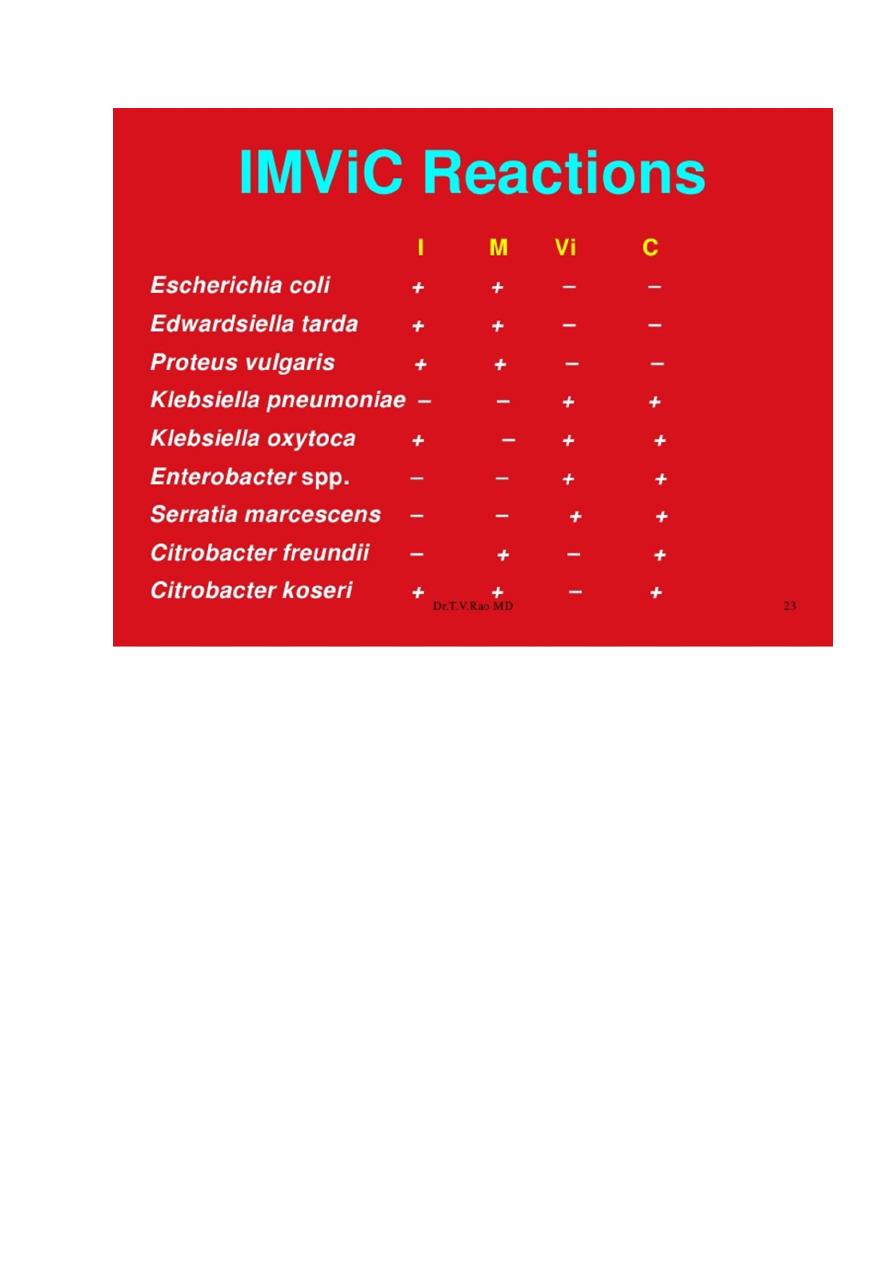
Microbiology-P4 D.Israa
12
